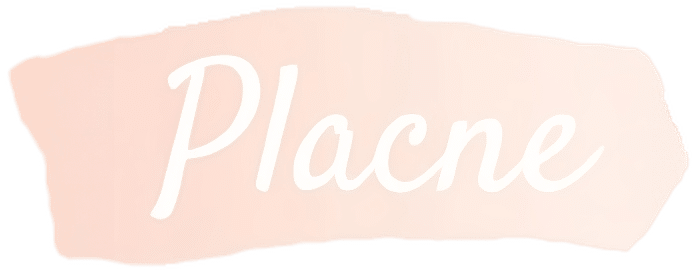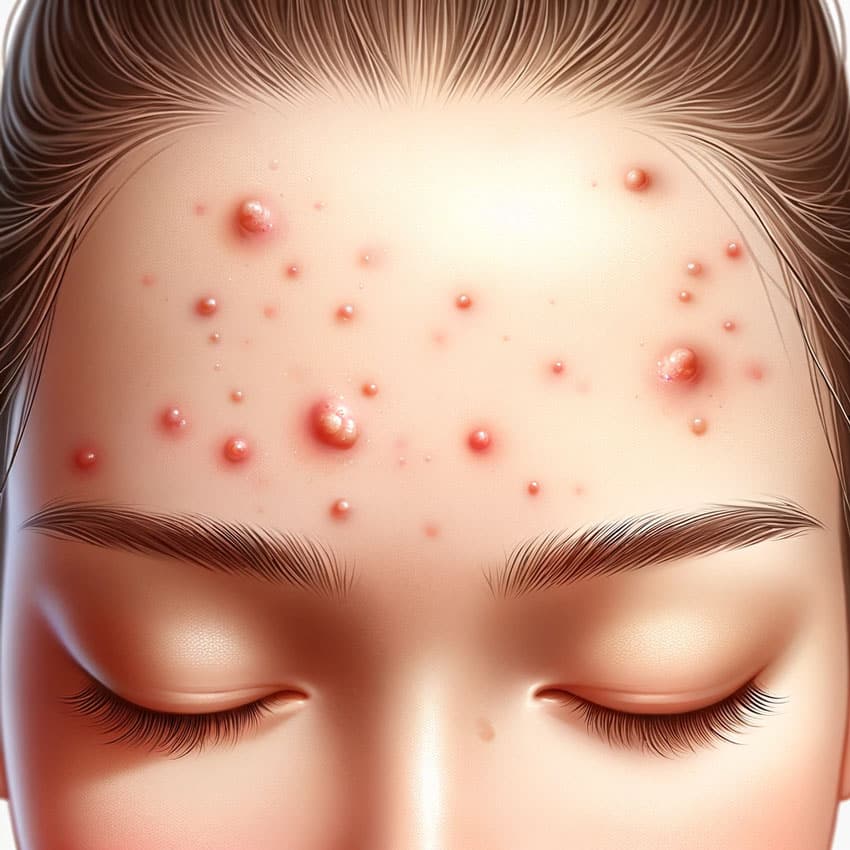Forehead acne is a common skin condition that can be frustrating to deal with. It can be caused by a variety of factors, such as genetics, hormonal changes, and poor skincare habits.
While it may seem like there’s no way to get rid of forehead acne, there are several effective treatments that can help reduce its appearance.
Understanding the Causes
Forehead acne is a common skin condition that affects many people. It can be caused by a variety of factors, including hormones, bacteria, excess oil, stress, puberty, medications, diet, makeup, hats, hair, and sweat.
Hormones play a significant role in the development of forehead acne. In particular, an increase in male sex hormones, or androgens, often causes the sebaceous glands to enlarge and produce more oil, which leads to acne. This is why forehead acne is so common during puberty when hormone levels are fluctuating.
Bacteria also play a role in the development of forehead acne. When excess oil and dead skin cells clog the pores, it creates an ideal environment for bacteria to grow. This can lead to inflammation and the formation of pimples.
Excess oil production is another common cause of forehead acne. When the sebaceous glands on your forehead produce too much oil, it can clog the pores and lead to acne.
Stress is another factor that can contribute to forehead acne. When you’re stressed, your body produces more cortisol, which can lead to an increase in oil production and inflammation. This can make acne worse or even trigger breakouts.
Certain medications can also cause forehead acne as a side effect. For example, synthetic hormones and corticosteroids may cause acne.
Diet and makeup can also play a role in the development of forehead acne. Eating a diet high in sugar and processed foods can lead to inflammation, which can exacerbate acne. Similarly, using makeup that clogs pores can lead to breakouts.
Wearing hats or headbands can also contribute to forehead acne. These items can trap sweat and oil against the skin, which can lead to breakouts. Additionally, if you have long hair, it can transfer oil and bacteria to your forehead, which can also lead to acne.
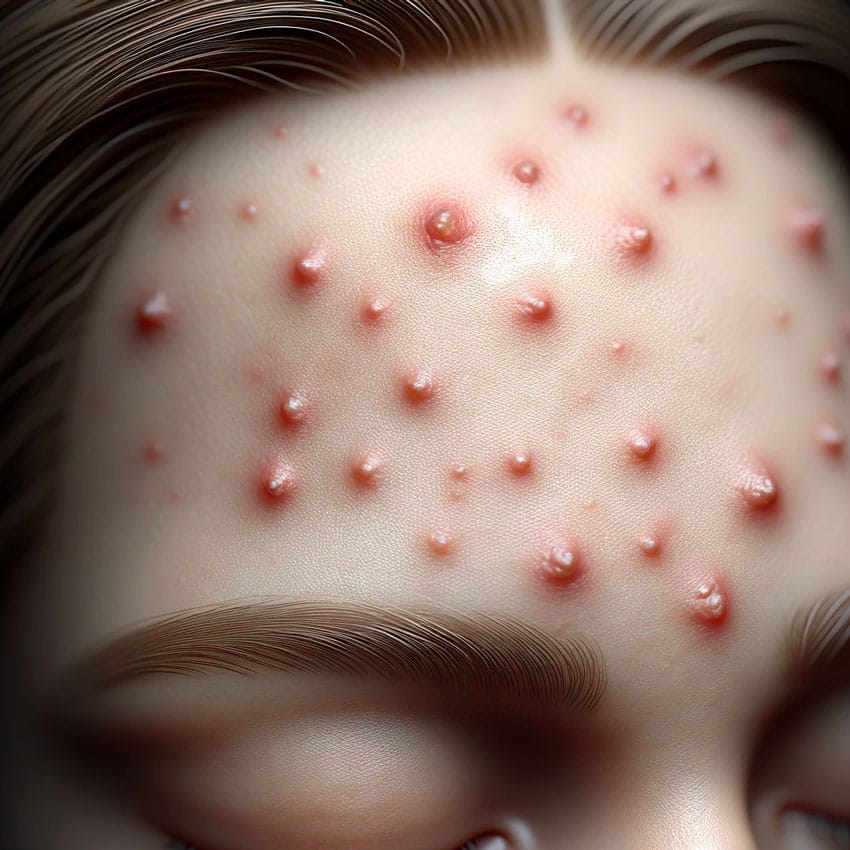
Identifying Symptoms and Types
Forehead acne is a common skin condition that can affect people of all ages. It is characterized by the appearance of pimples, blackheads, and whiteheads on the forehead. In some cases, the skin may also become red and irritated.
Pimples are a common symptom of forehead acne. They occur when the hair follicles become clogged with oil and dead skin cells. Pimples can range in size and severity, from small, whiteheads to large, painful cysts.
Blackheads are another symptom of forehead acne. They occur when the hair follicles become clogged with oil and dead skin cells, but the pores remain open. This causes the oil and dead skin cells to oxidize and turn black.
Whiteheads are similar to blackheads, but the pore is closed, causing the oil and dead skin cells to remain trapped beneath the skin’s surface. This can lead to the formation of small, white bumps on the forehead.
In some cases, forehead acne can also cause skin irritation, redness, and scarring. Skin irritation can occur due to the use of certain cosmetic products or tight-fitting clothing. Redness and scarring can occur as a result of picking or squeezing pimples.
It is important to identify the type of acne present on the forehead to determine the best course of treatment. This can be done by consulting a dermatologist or using over-the-counter acne products that are specifically designed for forehead acne.
Effective Treatments and Medications
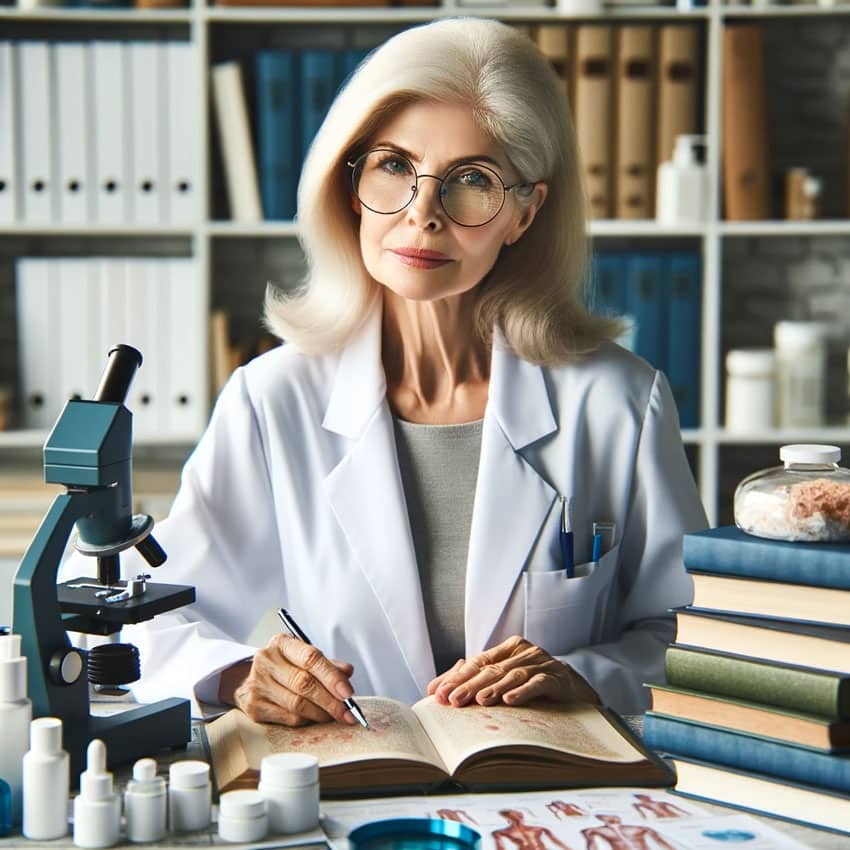
When it comes to getting rid of forehead acne, there are several effective treatments and medications available. However, it is important to note that what works for one person may not work for another, and it may take some trial and error to find the right solution. Consulting with a dermatologist or doctor can help determine the best course of action.
One popular over-the-counter medication for acne is benzoyl peroxide. This ingredient works by reducing inflammation and killing bacteria on the skin’s surface. It is available in various strengths and forms, including lotions, gels, foams, and creams.
Salicylic acid is another common ingredient found in many acne products. It helps to unclog pores and exfoliate the skin, making it an effective treatment for mild to moderate acne.
For more severe cases of acne, prescription treatments may be necessary. Antibiotics are often prescribed to reduce inflammation and kill bacteria in the skin.
Retinoids, such as tretinoin and adapalene, are also commonly prescribed for acne. These medications work by unclogging pores and preventing new acne from forming.
Azelaic acid is another prescription treatment that works by killing bacteria and reducing inflammation.
In addition to medications, there are also various ointments, gels, and creams available that can help treat acne. These products often contain a combination of different ingredients, such as benzoyl peroxide and a retinoid. It is important to follow the instructions carefully and use these products as directed to avoid irritation or other side effects.
Home Remedies and Lifestyle Changes
There are several home remedies and lifestyle changes that can help get rid of forehead acne. These remedies and changes are not only effective but also affordable and easy to implement. Here are some of the most effective ones:
Tea Tree Oil
Tea tree oil has been proven to be an effective remedy for acne due to its antibacterial and anti-inflammatory properties. To use tea tree oil, mix a few drops of it with a carrier oil such as coconut oil and apply it to the affected area. Leave it on for 10-15 minutes before washing it off with water.
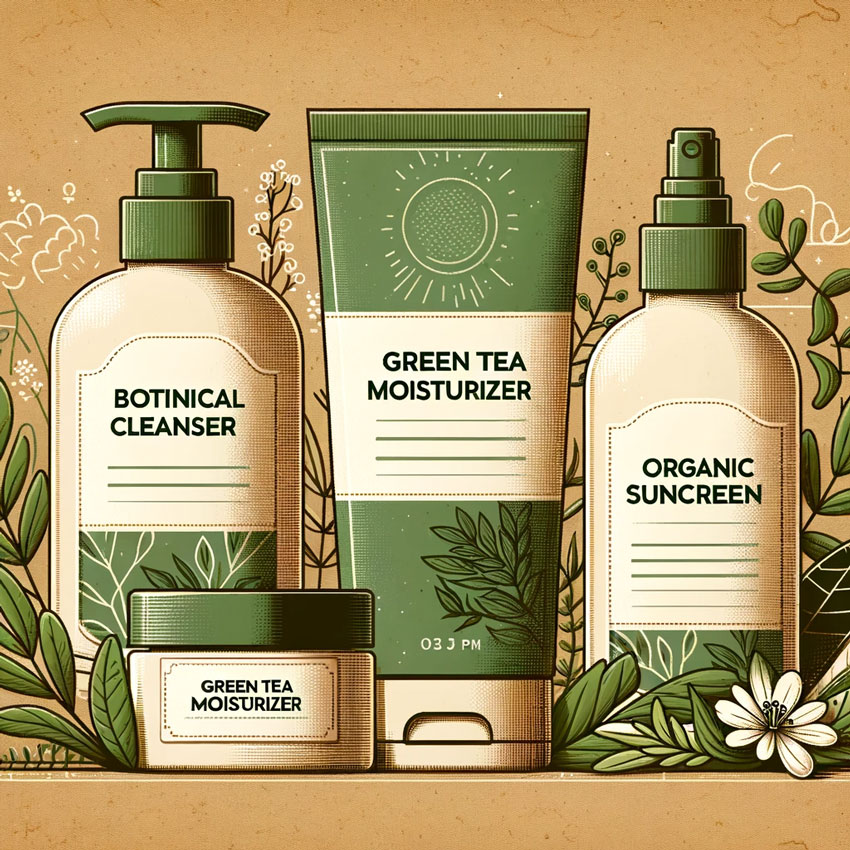
Aloe Vera
Aloe vera is another effective home remedy for acne due to its anti-inflammatory and antibacterial properties. To use aloe vera, apply the gel from the plant directly to the affected area and leave it on for 10-15 minutes before washing it off with water.
Home Remedies
There are several other home remedies that can help get rid of forehead acne. These include using apple cider vinegar, honey, and baking soda.
Apple cider vinegar can be used as a toner by diluting it with water and applying it to the affected area.
Honey can be applied directly to the affected area and left on for 10-15 minutes before washing it off with water.
Baking soda can be mixed with water to form a paste and applied to the affected area. Leave it on for 10-15 minutes before washing it off with water.
Skin Care
Proper skin care is essential for getting rid of forehead acne. This includes washing the face twice a day with a gentle cleanser, avoiding harsh scrubs and exfoliants, and using non-comedogenic moisturizers and sunscreens.
Diet
Diet can also play a role in getting rid of forehead acne. Eating a balanced diet that is rich in fruits, vegetables, and whole grains can help reduce inflammation and promote healthy skin.
Stress
Stress can also contribute to acne. Managing stress through techniques such as meditation, yoga, and deep breathing can help reduce acne breakouts.
Time
It is important to give any acne treatment time to work. It can take several weeks or even months to see results from some treatments.
Sun
Protecting the skin from the sun is also important for getting rid of forehead acne. This includes wearing a broad-spectrum sunscreen with an SPF of 30 or higher and avoiding prolonged sun exposure.
Hair Care
Hair care can also play a role in getting rid of forehead acne. Avoiding hair products that contain oils and other pore-clogging ingredients can help reduce acne breakouts.
Prevention and Long-Term Management
Preventing forehead acne can be challenging, but with the right approach, it can be managed effectively. Here are some tips for preventing and managing forehead acne:
- Use a gentle cleanser: Use a gentle cleanser to wash your face twice a day. Avoid using harsh soaps or scrubs that can irritate your skin and make acne worse.
- Avoid touching your face: Touching your face can transfer oils, bacteria, and dirt from your hands to your face, which can cause acne. Try to avoid touching your face as much as possible.
- Use non-comedogenic products: Use non-comedogenic products, such as makeup and sunscreen, which won’t clog your pores. Look for products that are labeled “oil-free” or “non-comedogenic.”
- Protect your skin from the sun: Protect your skin from the sun by wearing a hat and applying sunscreen with an SPF of at least 30. Sun damage can cause acne to worsen and can also cause scarring.
- Watch out for hormonal changes: Hormonal changes can cause acne to flare up. Women may notice acne breakouts during their menstrual cycle or pregnancy. Talk to your doctor about hormonal treatments if you’re experiencing severe acne.
- Be mindful of hair products: Hair products can also contribute to forehead acne. Avoid using oily or greasy hair products and wash your hair regularly.
